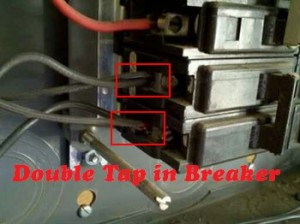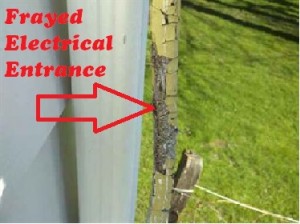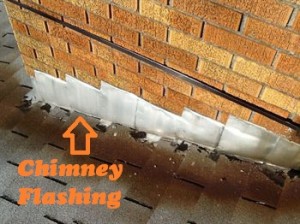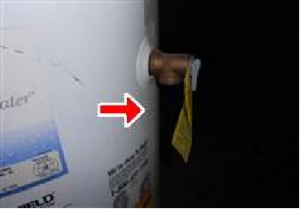Top 10 “Common” Home Inspection Findings
Have questions about buying or selling a home?
Ask Now!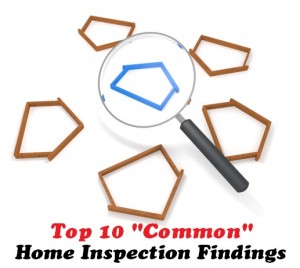
Top 10 “Common” Home Inspection Findings
Most real estate transactions are contingent upon an acceptable home inspection to the buyers satisfaction. They can also be contingent on other inspections as well, however, these inspections are not as common as the home inspection. A qualified and experienced home inspector should find something that could be corrected, upgraded, or repaired in every home that they inspect, even newly built homes!
Just like no man is created equal, no home is created equal and each inspection report will be different. There are items that are more commonly found during home inspections then others. We thought it would be helpful to create a top 10 list of the most common home inspection findings that we see inspection after inspection. This list can help a seller be proactive and look for these common inspection findings prior to listing their home AND correct if present. Also this list can help a buyer understand some of the more common home inspections findings.
Improper Electrical Wiring
During an inspection, the inspector should check the outlets throughout the home and also check the interior of the electrical breaker/fuse box. A common electrical wiring problem that is found is an outlet with reversed polarity. Reversed polarity is when the “HOT” and “NEUTRAL” wires are placed on the improper terminal on the outlet. Correcting reversed polarity is a fairly simple correction. Check out this guide to correcting reversed polarity. Another common improper electrical wiring finding are double taps within the electrical breaker box. This is when there are two electrical circuits/feeds attached to a single breaker. This can be considered a fire hazard and a common correction to this problem is a “twin breaker.”
Plumbing
Leaks in the plumbing underneath sinks and around toilets is a common inspection finding. This can be due to the incorrect type of plumbing material, a broken seal around a toilet, or even rusted/corroded plumbing. Older homes often have a galvanized water main. This can lead to poor water pressure due to the corrosion of the inside of the pipe. Newer homes are now utilizing copper water main lines which eliminates the water pressure issue.
Heating Systems
During an inspection the inspector should remove the cover on the furnace or boiler system. It’s recommended that the heating systems in a home are serviced annually to ensure everything is in good, safe, and in working order. Many homeowners unfortunately do not have their heating systems serviced annually, so a common inspection finding is a dirty heating system. Home inspectors will normally recommend a cleaning and inspection of the heating system in this scenario.
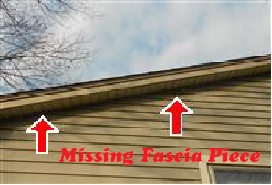
Missing fascia pieces are just one of the common exterior maintenance findings during a home inspection
Exterior Maintenance
An inspection should include the exterior of a home in addition to interior. One common exterior maintenance finding relates to the fascia. The most common fascia problems are missing pieces, rotted pieces, or fascia boards with little to no ventilation. Proper or improper ventilation can greatly effect the lifespan of a homes roof.
Improper Fan Ventilation
Fan ventilation systems should be vented to the exterior of a home. A common finding relates to bathroom vent fans. An inspector should access the attic or crawl space. It’s common that when bathroom vent fans are installed, they are not vented to the exterior of the home, but rather into the attic or crawl space. The moisture from the bathroom vent fan into the attic can potentially cause mold problems. The correct way to vent a bathroom fan can be done fairly easily and inexpensively.
Electric Entrance Cable
Due to exposure to sun and weather for a long period of time an electrical entrance cable (or service entrance cable) can become frayed. This cable runs from the utility power connection point to the meter socket, then, inside to the breaker panel. Another inspection finding that’s fairly common are undersized service entrance cables. For example, the electrical breaker box is rated as a 200 AMP service and the entrance cable is only rated 150 AMP.
Inoperable Windows
During an inspection, each window should be checked by the inspector. There are a couple common problems with windows not functioning correctly. In older homes that haven’t upgraded to newer windows, broken sash cords are common. A broken sash cord can lead to a window not functioning correctly. Broken sash cords can be fixed. In addition to broken sash cords, there are times that old windows have been painted shut, which make windows inoperable.
Fireplaces / Chimneys
Homes with chimneys/fireplaces should have a professional chimney inspection performed, however, a good home inspector should still inspect them. A common finding from inspections are issues with the chimney flashing. This can lead to water intrusion into a home. Other common findings are missing mortar, missing chimney caps, or cracked tiles in the chimney flue.
Grading
If there is water present in the basement of a home, it may be caused by several things. One of the most common causes for this is improper or eroded exterior grading. If moisture/rain isn’t drained effectively away from the foundation of a home, this can cause water penetration in basements or crawl spaces. HGTV provides “A Guide to Home Grading Plan” that provides some excellent tips to proper grading.
Water Heater
There are a couple common inspection findings with water heaters. The first includes requirements for the water heaters “B-Vent.” For many years the code requirement for width of the “b-vent” was 3 inches in diameter. In recent years the code requirement calls for a 4 inch diameter. Inspectors should note this in their report, however, it certainly is not a major concern seeing as 3 inch was used for so long with no huge issues. The other common water heater finding relates to the temperature pressure relief valve (TPRV) pipe or lack there of. The TPRV should be specific material, length, and height from the ground to be considered safe.
These are 10 common home inspection findings. As mentioned, each home inspection report is going to be different! What other home inspection findings would you consider common?
About the authors: The above information was provided by the Keith Hiscock Sold Team (Keith & Kyle Hiscock). With almost 30 years combined experience, if you’re thinking of selling or buying, we’d love to share our knowledge and expertise.
We service the following Greater Rochester NY areas: Irondequoit, Webster, Penfield, Pittsford, Fairport, Brighton, Greece, Gates, Hilton, Brockport, Mendon, Henrietta, Perinton, Churchville, Scottsville, East Rochester, Rush, Honeoye Falls, Chili, and Victor NY.
Visit our website at www.HiscockHomes.com.
